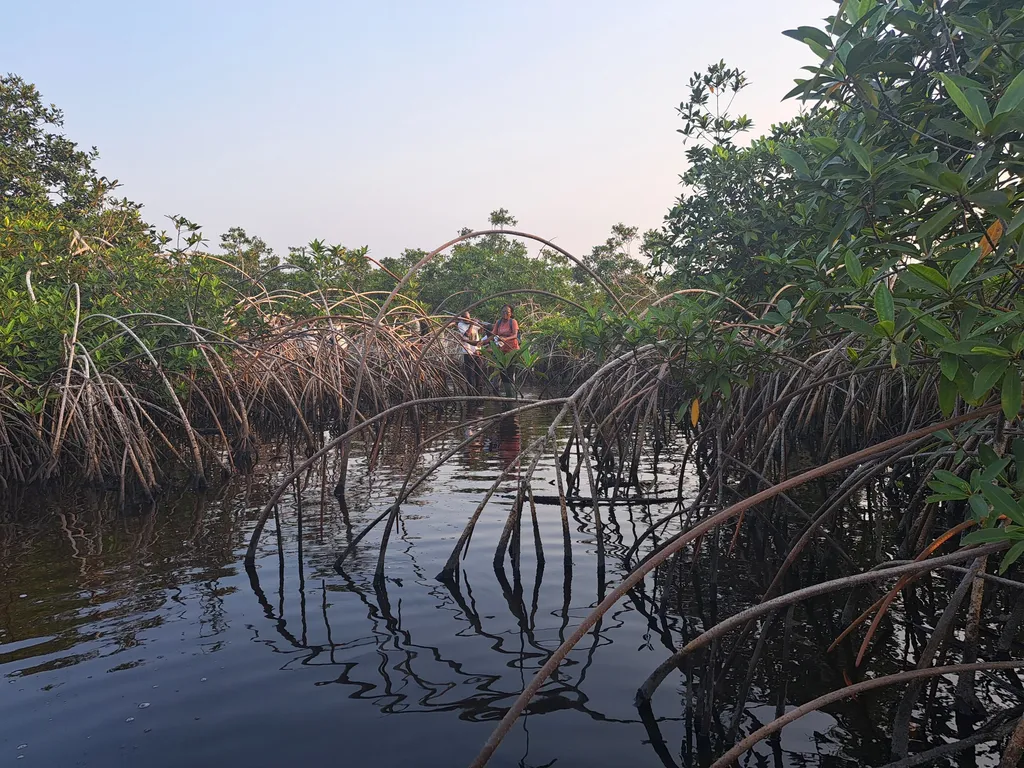In the lush coastal regions of Yanpu Bay, Wenzhou, a groundbreaking study is unraveling the intricate metabolic responses of Kandelia obovata, a vital mangrove species, to different pest control treatments. Led by Ziyu Zhao from the Wenzhou Key Laboratory of Resource Plant Innovation and Utilization at the Zhejiang Institute of Subtropical Crops, this research is shedding light on how simple agricultural practices can significantly enhance the growth and quality of this commercially important plant.
Kandelia obovata, known for its role in coastal protection and carbon sequestration, is a cornerstone species in the energy and environmental sectors. The study, published in *Frontiers in Plant Science* (translated as *Frontiers in Plant Science*), explores the impact of four different pest control treatments on the plant’s growth and soil nutrient capacity. These treatments include a control group (T1), leaf picking (T2), pesticide spraying (T3), and a combination of leaf picking and spraying (T4).
The results are striking. All treatments promoted the germination of new branches, increased the number of leaves, and improved plant quality, with the combined treatment (T4) showing the most significant effects. “The combination of leaf picking and pesticide spraying not only enhanced the plant’s growth but also triggered a cascade of metabolic changes that could be crucial for pest resistance,” Zhao explains.
Using advanced LC-MS/MS metabolomics analysis, the researchers identified 528 metabolites in the soil and 1174 metabolites in the new leaves. These metabolites, primarily lipids, lipid-like molecules, organic acids, phenylpropanoids, and polyketides, play a pivotal role in the plant’s defense mechanisms. The study highlights the importance of the linoleic acid pathway and secondary bile acid biosynthesis in soil, as well as flavonoid and flavonol biosynthesis in the leaves.
The implications for the energy sector are profound. Kandelia obovata is not just a coastal protector but also a potential source of bioenergy. Understanding its metabolic responses to pest control treatments can lead to more efficient and sustainable cultivation practices. “This research provides a new theoretical basis for the metabolic mechanism of pest control in Kandelia obovata,” Zhao notes. “It opens up new avenues for genetic improvement and molecular breeding, which could enhance the plant’s resistance and commercial value.”
The study’s findings could revolutionize the way we approach pest management in mangrove forests, ensuring healthier plants and more robust ecosystems. As the world seeks sustainable energy solutions, the insights gained from this research could be instrumental in developing resilient and productive bioenergy crops.
In the quest for sustainable energy, every discovery counts. This research not only advances our understanding of Kandelia obovata but also paves the way for innovative agricultural practices that could benefit the energy sector and beyond. As Zhao and her team continue to explore the metabolic intricacies of this remarkable plant, the future of coastal agriculture and bioenergy looks brighter than ever.

